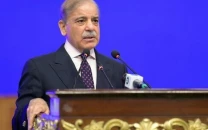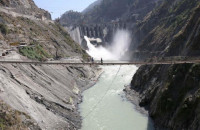Free trade: Size does not matter
The key is to play to our comparative strengths.

Free trade: Size does not matter
On January 27, business sections of various newspapers carried two contrasting news on free trade. Some papers reported the Secretary Commerce’s briefing to the National Assembly Standing Committee on Trade about the reluctance of the US to enter a free trade agreement with Pakistan and its suggestion to ask for trade concessions instead. On the same day, some papers reported about a seminar in Karachi on free trade, in which calls were made for Pakistan to encourage freer trade with its neighbors to ensure peace and prosperity. In light of these views, expressed by those in favour of free trade and those in favour of protectionism and trade restrictions, there is a course that our policy makers can take.
Those of us who voice trade restrictions and protectionism usually point to the scale differences between the developed economies and developing ones. According to this view, intelligibly put forward by Dr Kaiser Bengali in his speech in Karachi’s seminar, developed countries enjoy economies of scale due to which they are able to maintain average production costs at a significantly lower level than their competitors in developing economies. Thus the developing countries should give a handicap advantage to their producers to keep their competitive advantage in the form of subsidies or support prices.
For Bengali, free trade between the countries that are not equal is not workable as, for instance, the under-developed countries will continue to export only raw material whereas the developed countries will continue to produce value added while continue selling them back to the poor. This ‘center-periphery’ argument is a characteristic dependency theory case that was popularised by Latin American economists in the sixties.
The countries where policy makers believed the dependency theorists, such as India and Pakistan, ultimately followed import substitution policies, heavy investments in large scale capital intensive industries, often ignoring their natural competitive advantage in labour intensive products. These economies continued to remain backward and trapped in a low growth trajectory till India decided to open up international trade in early nineties, followed by Pakistan. Rest, at least in the case of India, as they say, is history.
During the sixties, in the heydays of both Latin American Dependencia school and the socialists grand nationalisation agendas, a set of countries, partly under the influence of the US, but mostly for their good, decided to take an unpopular course. They opened up their doors to foreign investment, focused on few labour intensive industries such as electronics, and adopted free trade. These countries are now known as Asian Tigers, spearheaded by Japan, and later on caught up by South Korea, Malaysia, Singapore and many others.
Going back further into the history, the industrial revolution was not due to mercantilists policies, rather it was made possible by adopting free trade policies, for instance by repeal of Corn Laws in the UK.
Such examples from history should provide for a reliable evidence to discredit trade protectionists, dependency theorists and socialists alike. However it is still important to look at the origin of ideas of free trade.
When someone asked the first American economist to win a Nobel laureate, Paul Samuelson ‘what is the economic concept which is most true and least obvious’, the professor replied: ‘comparative advantage’.
It is not well known that Imam Ghazali had discovered the principle of exchange based on comparative advantage as the foundation of all trade about 1,000 years earlier than Samuelson and 800 years before Ricardo. Quoted in Encyclopedia of Political Economy, Imam Ghazali had said:
“…farmers live where farming tools are not available. Blacksmiths and carpenters live where farmers are lacking. Naturally, they want to satisfy needs by giving up in exchange part of what they possess.”
Thus during the seminar in Karachi on free trade, when Dr Tom Palmer spoke of exchange and comparative advantage as the foundations of trade and prosperity, I was far from surprised.
US own track record of adopting free trade policies does not corroborate Pakistan’s secretary commerce’s claim that US is reluctant to enter free trade agreements with countries like Pakistan on the basis of size difference.
USA has FTAs have 17 countries including large and small countries like: Australia, Bahrain, Chile, Costa Rica, Guatemala, Israel, Jordan, Morocco, Oman, Peru, Singapore, Canada, and Mexico. The free trade agreement follows the principle of comparative advantage, and size does not matter. A small country like Finland can take global leadership by building just one brand, Nokia in this case.
While we have missed several chances in our history by picking up wrong policies, it is never too late to sit in the right school. It is high time we come out of influence from dependency theorists, development economists, and socialist economists. Our trade policy makers would do well by auditing some courses in Classical economics.
The writer works as a principal consultant at Development Pool and a founding member of Economic Freedom Network Pakistan.
Published in The Express Tribune, February 27th, 2012.



















COMMENTS
Comments are moderated and generally will be posted if they are on-topic and not abusive.
For more information, please see our Comments FAQ